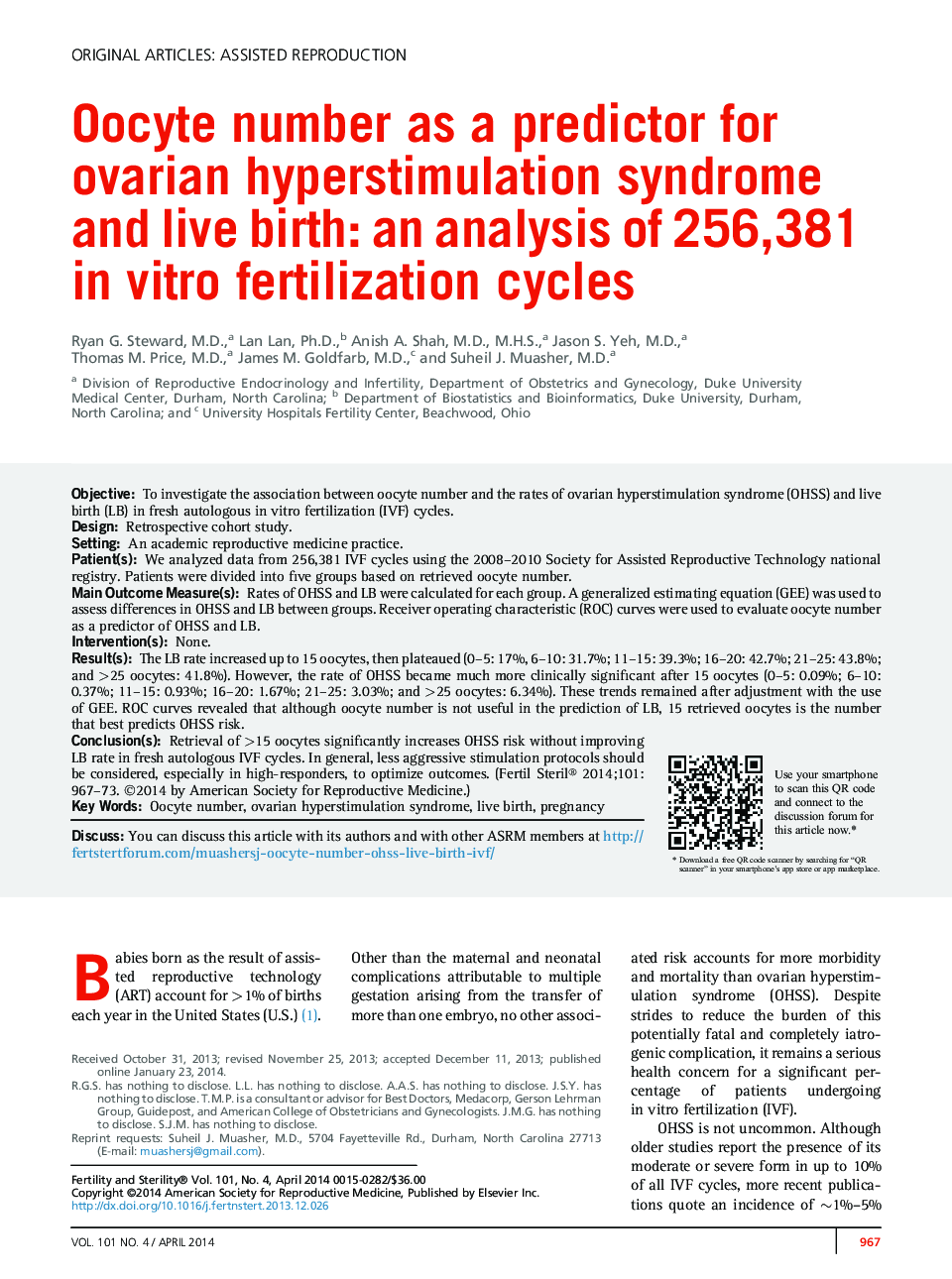| کد مقاله | کد نشریه | سال انتشار | مقاله انگلیسی | نسخه تمام متن |
|---|---|---|---|---|
| 3934506 | 1253380 | 2014 | 7 صفحه PDF | دانلود رایگان |

ObjectiveTo investigate the association between oocyte number and the rates of ovarian hyperstimulation syndrome (OHSS) and live birth (LB) in fresh autologous in vitro fertilization (IVF) cycles.DesignRetrospective cohort study.SettingAn academic reproductive medicine practice.Patient(s)We analyzed data from 256,381 IVF cycles using the 2008–2010 Society for Assisted Reproductive Technology national registry. Patients were divided into five groups based on retrieved oocyte number.Main Outcome Measure(s)Rates of OHSS and LB were calculated for each group. A generalized estimating equation (GEE) was used to assess differences in OHSS and LB between groups. Receiver operating characteristic (ROC) curves were used to evaluate oocyte number as a predictor of OHSS and LB.Intervention(s)None.Result(s)The LB rate increased up to 15 oocytes, then plateaued (0–5: 17%, 6–10: 31.7%; 11–15: 39.3%; 16–20: 42.7%; 21–25: 43.8%; and >25 oocytes: 41.8%). However, the rate of OHSS became much more clinically significant after 15 oocytes (0–5: 0.09%; 6–10: 0.37%; 11–15: 0.93%; 16–20: 1.67%; 21–25: 3.03%; and >25 oocytes: 6.34%). These trends remained after adjustment with the use of GEE. ROC curves revealed that although oocyte number is not useful in the prediction of LB, 15 retrieved oocytes is the number that best predicts OHSS risk.Conclusion(s)Retrieval of >15 oocytes significantly increases OHSS risk without improving LB rate in fresh autologous IVF cycles. In general, less aggressive stimulation protocols should be considered, especially in high-responders, to optimize outcomes.
Journal: Fertility and Sterility - Volume 101, Issue 4, April 2014, Pages 967–973